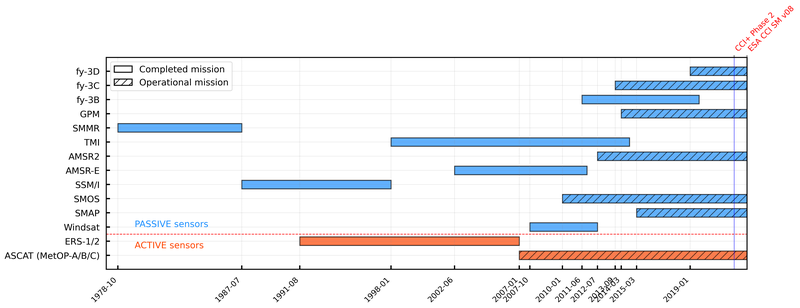-
Notifications
You must be signed in to change notification settings - Fork 0
New issue
Have a question about this project? Sign up for a free GitHub account to open an issue and contact its maintainers and the community.
By clicking “Sign up for GitHub”, you agree to our terms of service and privacy statement. We’ll occasionally send you account related emails.
Already on GitHub? Sign in to your account
Expansion Plan #1
Comments
|
A few things we have learned while doing this:
|
|
Some observations/issues with the ESACCI mrsos product. See the ILAMB results:
|
|
After more discussion we have come down to the following plan @EliasMassoud1
|
ObservationsOn Units and ConversionsYou will find many observational products have units of Then we can express the volumetric fraction as: We can also relate the volume of water to its mass by: The models are reporting a mass area density. So if we want to relate this to the volumetric fraction: However while these 2 quantities can be converted, they are different. The volumetric fraction is pointwise valid anywhere in the cell and thus can be evaluated at discrete depths. But when we multiply by For this reason, we have decided to always change the model quantities to volumetric fractions as the depth bounds are always available and it is the most general quantity. This goes better with the reference data where soil horizons vary. This has changed some conclusions. The spread of models is not quite as large. We were comparing integrals over different ranges before.
|


The following are notes and action items from meetings between Nate and Elias.
To Do
Nate
evspsbland model selectionElias
What is currently done
gpp,lai, andevspsblResearch questions
Down the road
The text was updated successfully, but these errors were encountered: